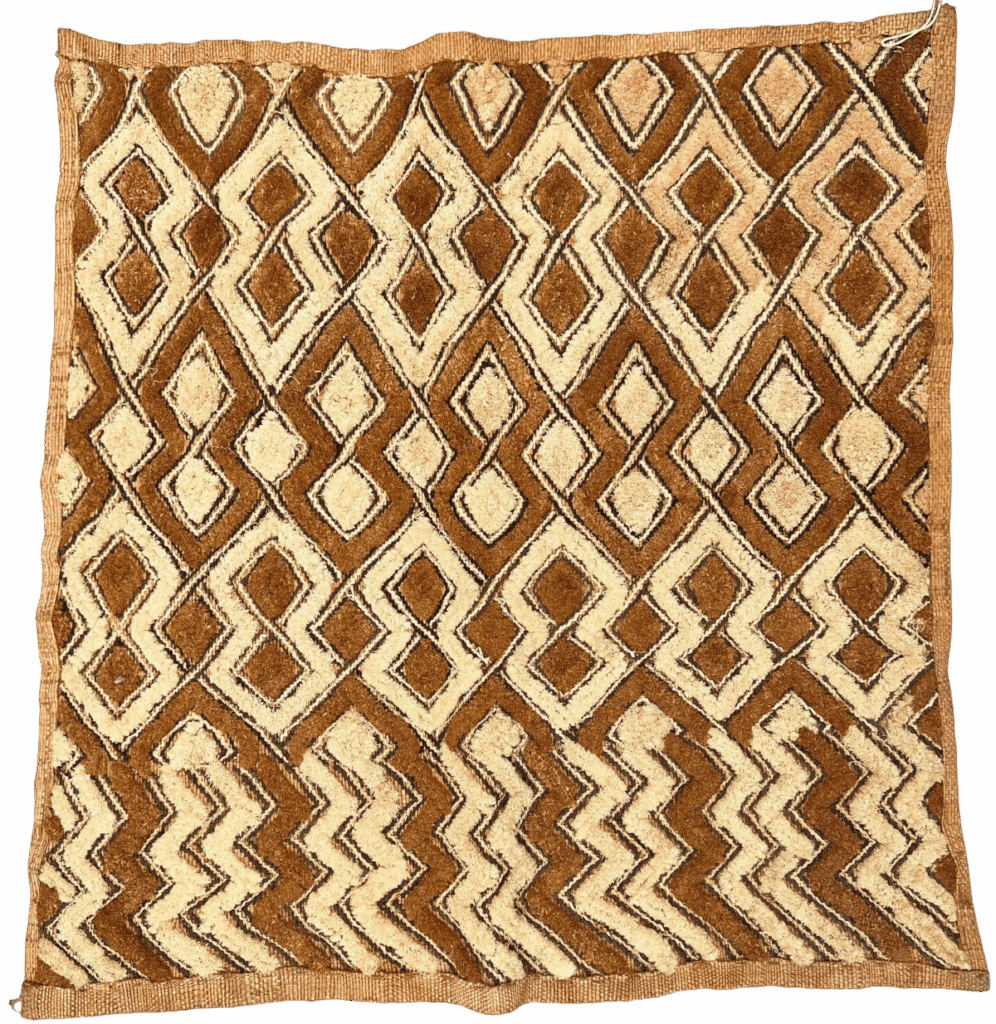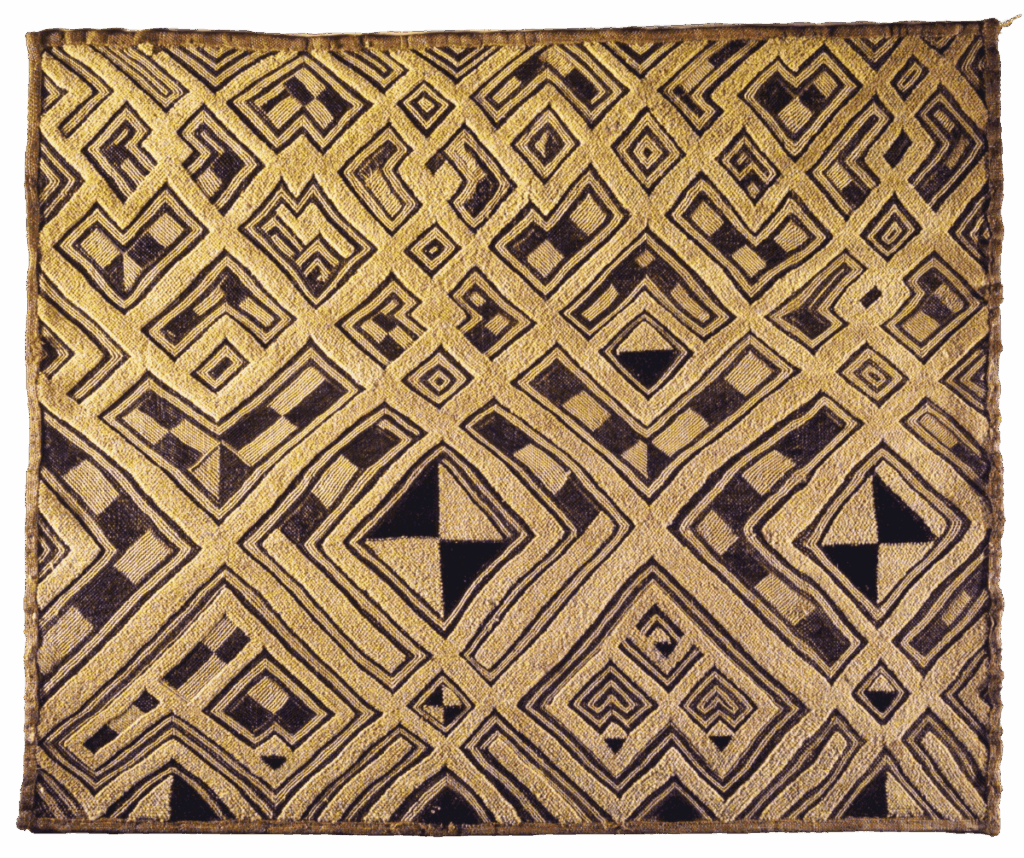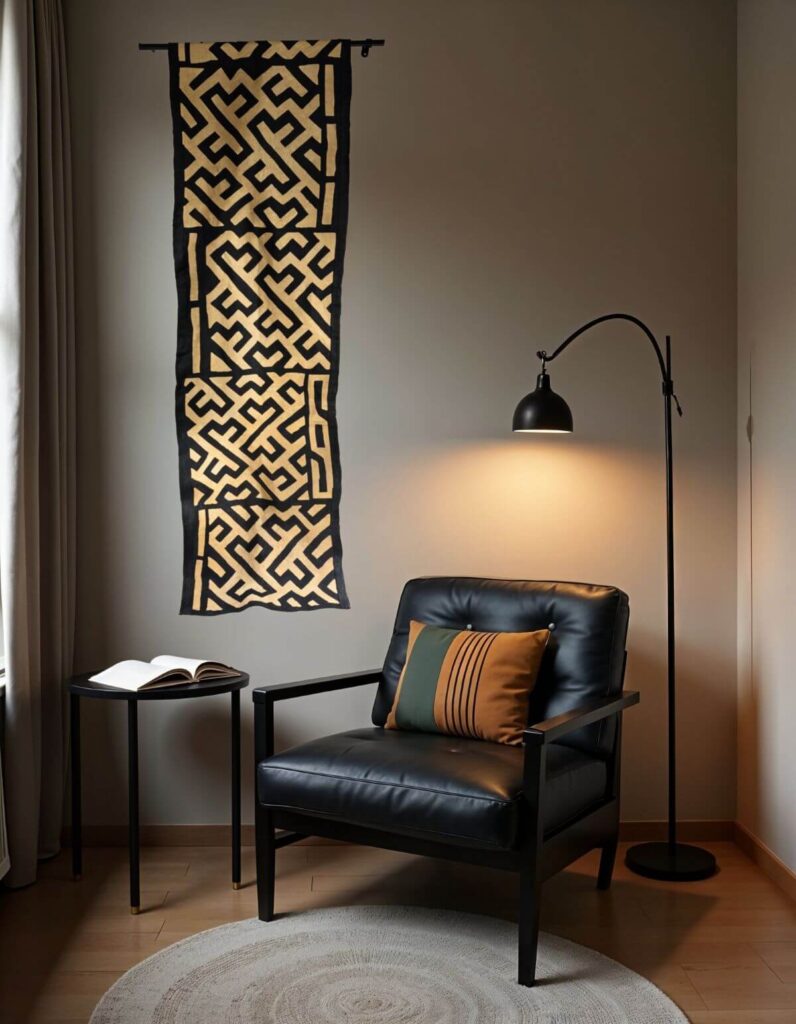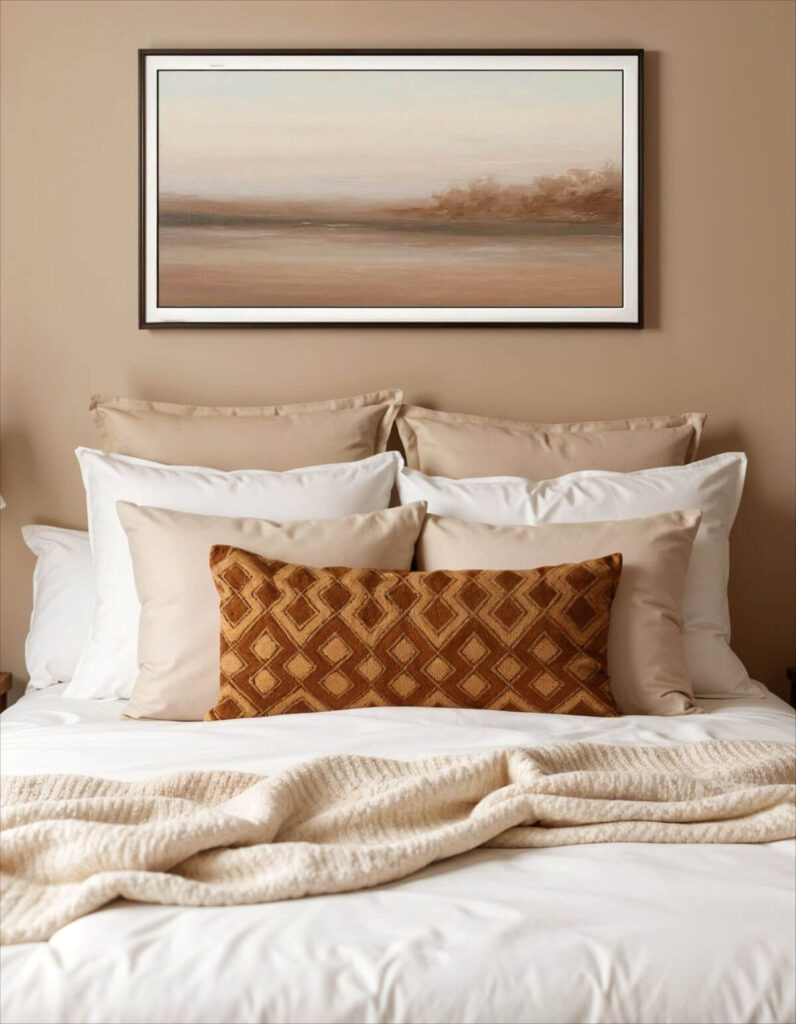Kuba cloth is one special textile. The patterns feel alive—full of movement and rhythm. The history behind it is rich, and the process to make it is both complex and artistic.
Here’s what you should know about this masterpiece coming from the heart of Central Africa—and how to make it look amazing in your space.
In this article:
Kuba Textiles of the Congo: What You Need to Know
Kuba cloth comes from the Kuba people of what’s now the Democratic Republic of Congo. For generations, they’ve been weaving these textiles using raffia palm leaves.
The base cloth is woven (traditionally by men), then decorated with bold, layered designs using stitching, appliqué, and patchwork. Sometimes the patterns feel precise. Other times, they’re wild and unexpected.

Three Intricate Decoration Techniques
Kuba textiles are puzzles of layered techniques:
Embroidery:
- Cut pile gives the cloth a velvety touch. These are sometimes called “Kasai Velvets.”
- Flat embroidery looks using lines and shapes more like a stitched drawing.
Appliqué:
- Bits of raffia are stitched onto the surface to form shapes and patterns. Some are neat and symmetrical, others feel spontaneous and free-form.
Patchwork:
- Pieces of the base cloth are cut out and replaced with different panels—some dyed, some plain. It ends up looking almost graphic, like modern art.
Many Kuba pieces combine two or more of these techniques in one. That’s part of their magic.

Patterns That Feel Like Jazz
When I first saw Kuba cloth, it didn’t feel still—it felt like it was moving. The patterns had rhythm. They weren’t chaotic, but they weren’t predictable either.

The design elements are simple:
- Geometric shapes like diamonds, spirals, zigzags
- Near symmetry that sometimes breaks in unexpected ways
- Repetition with surprise—a steady beat, then a twist
It’s a little like jazz: structured, but full of improvisation. That balance between order and flow is what gives Kuba cloth its unique style.

Where to Showcase Kuba Cloth at Home
So how do you bring this incredible textile into your home without overwhelming your space? I’ve tried a few things and seen others that left a lasting impression. Here are my favorite design choices.
Frame Kuba Cloth Like the Art It Is

Framing Kuba cloth is hands-down my favorite approach. It turns it into the artwork it truly is. I like using wide white mats and simple black or wooden frames so the patterns stay the focal point.
You can hang framed Kuba cloth:
- Above your sofa
- Over a sideboard or console
- On a narrow wall you never know how to fill
- Right above a fireplace mantel for drama
You May Also Like: 5 Beautiful African Wall Decor Ideas for a Standout Home
Hang It Freely and Let It Flow

A large Kuba textile works beautifully as a wall hanging. It brings texture and movement, especially if you let it drape slightly instead of pinning it flat.
- Use a large rug-style Kuba cloth to fill a big empty wall
- Try a long, narrow strip as a soft tapestry in a hallway or reading nook
- Drape it as a curtain panel to frame a window or doorway
You May Also Like: Why Fabric Wall Decor is the Ultimate Game-Changer
Upholster With Intent

If you’re feeling bold, try using Kuba cloth for upholstery. It adds a graphic look to home accents. The key is to use it sparingly so it doesn’t compete with everything else in the room.
Great options include:
- Throw pillows—especially with a mix of solids
- Lampshades, looking sculptural with the patterns
- Small ottomans or benches
I’ve even seen it used to wrap headboards and it looked fantastic.
You May Also Like: Eclectic Home Design Done Right: Chic, Unique, Unexpected
Kuba Cloth Is History You Can Live With
What I love most about Kuba cloth is how it sits at the intersection of art and identity. It’s not there just to match a color palette—it brings a backstory that’s hard to forget.
For anyone who loves decor that means something, this textile is the real deal. It holds tradition. It holds technique. And somehow, it fits beautifully into a 21st-century home.
Love African Textiles? Discover How to Style Iconic Mud Cloth in a Modern Home.






